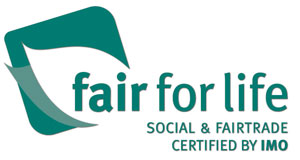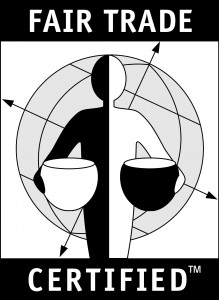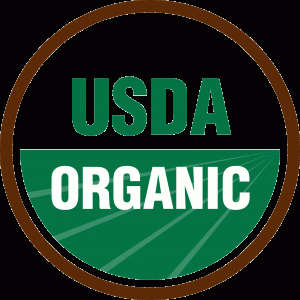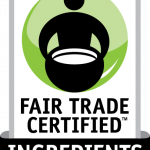I’m very wary of both green-washing and fair-washing. Fair Washing is when a company makes out it has Fair Trade practices, when it really doesn’t. In the wake of the terrible Bangladesh factory fire, where over 700 workers have been confirmed dead, it’s all the more important that we make sure the companies that we buy from are doing their best to ensure safe working conditions and fair wages for their workers.
 However, something rather icky has come to the fore in the personal care space as far as “Fair Trade” is concerned. So, let’s break is down
However, something rather icky has come to the fore in the personal care space as far as “Fair Trade” is concerned. So, let’s break is down  a bit: There are a few Fair Trade certification organizations. The two largest that are used in the US areFair Trade USA and Fair For Life. The difference between the two is that the former, Fair Trade USA, licenses its seal (image on the right,) for a fee on products that might have as little as 2% fair trade content. Conversely, Fair For Life (above,) does not allow use of its label on any product that is not almost completely Fair Trade. The other great thing about Fair For Life is that they broadened their scope to include virtually all agricultural commodities, which gives more farmers in developing Nations a chance at making a fair wage.
a bit: There are a few Fair Trade certification organizations. The two largest that are used in the US areFair Trade USA and Fair For Life. The difference between the two is that the former, Fair Trade USA, licenses its seal (image on the right,) for a fee on products that might have as little as 2% fair trade content. Conversely, Fair For Life (above,) does not allow use of its label on any product that is not almost completely Fair Trade. The other great thing about Fair For Life is that they broadened their scope to include virtually all agricultural commodities, which gives more farmers in developing Nations a chance at making a fair wage.
If you want to find out about a particular brand, I recommend going to Fair Trade International, a US organization that only accepts companies as members who are the real thing as far at Fair Trade practices are concerned.
We’ve obviously got a long way to go before major companies come on board and really get serious about sourcing Fair Trade ingredients, however, we can try to support personal care companies who are stepping up to the plate. Two companies that carry the Fair For Life logo and are a member of Fair Trade International, are Dr. Bronner’s Magic Soaps and Alaffia. Alaffia carries a line of gorgeous skin care products.
 Remember, it’s the same deal with the Organic Certification labeling. Here’s a reminder of that the USDA organic certification seal requires:
Remember, it’s the same deal with the Organic Certification labeling. Here’s a reminder of that the USDA organic certification seal requires:
“100% organic” Every ingredient must be 100% organic, and the product may display the USDA seal
“Organic” must contain a minimum of 95% organic ingredients, and the product may display the USDA seal
“Made With Organic Ingredients” The product must be made up of at least 70% organic ingredients. The product may NOT display the USDA seal.
Less Than 70% organic ingredients: Products cannot use the term “organic” ANYWHERE on the principle display panel, but they may use the term in the ingredient list to denote where a specific ingredient may be organic.
Correction: I have just been contacted by Fair Trade USA, and they felt that they needed to clarify some of the information above. Here’s the new info:
Only products with 100% Fair Trade content may use the full Fair Trade Certified label. Any products that have a mixture of Fair Trade  and non-Fair Trade ingredients, like ice cream and body care for example, will use a differentiated Fair Trade Certified Ingredients label and must have a minimum of 20% Fair Trade content (the same threshold as Fairtrade International). Below 20% the label may not be used. We are the only Fair Trade certifier that has a differentiated label for 100% Fair Trade products to provide greater clarity to consumers.
and non-Fair Trade ingredients, like ice cream and body care for example, will use a differentiated Fair Trade Certified Ingredients label and must have a minimum of 20% Fair Trade content (the same threshold as Fairtrade International). Below 20% the label may not be used. We are the only Fair Trade certifier that has a differentiated label for 100% Fair Trade products to provide greater clarity to consumers.



